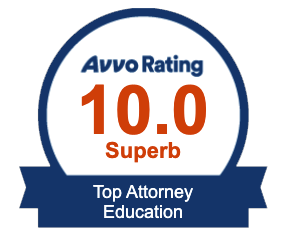This is another post concerning the annual IEP meeting and educational placement. In Georgia, the usual practice at an annual IEP meeting is to discuss all other issues on the IEP and then discuss educational placement as one of the last topics. A word of advice: you should discuss your child’s educational placement during the discussion of your child’s goals and objective and not wait until the end of the IEP meeting to discuss placement. For example, if the child’s first goal is to improve her expression language skills and severl objectives are developed to implement this goal, then what is the appropriate classroom and educational setting for this goal? There must be continuum of educational placement provided by the school system to meet your child’s educational needs. Thus, the school system must provide a continuum of alternative placements beginning with a regular classroom with no supports, special education classes (commonly referred to a pull-out or resource class, self-contained special education class (more than 50% of school day child is placed in segregated class with disabled peers for specialized instruction), special schools (private or public), home instruction, and residential. 34 C.F.R. 300.115(b)(1). The IEP committee must also consider supplementary aids and services such as an itinerant special education teacher, paraprofessional, co-teaching (special education teacher) to ensure that your child remains in the least restrictive environment. 34 C.F.R. 300.115(b)(2). The gist of the least restricitve environment is that to the maximum extent appropriate, children with disabilities should be educated with nondisabled peers. The IEP committee should consider more restrictive environments (e.g. classes or school) for your child only if the nature and severity of your child’s disability is such that education in the regular classroom with the use of supplementary aids and services cannot be achieved satisfactorily. 34 C.F.R. 300.114(a)(2).
The key point is there is a presumption that your child be educated in the least restrictive enviornment, but this presumption can be rebutted if the IEP committee recommends a more restrictive educational setting (classes or school) because of the nature and severity of your child’s disability so that education in the regular educational classrooom with the use of supplementary aids and services (e.g. assistive technology, paraprofessional, itinerant special education teacher, etc.). cannot be achieved satisfactorily. Of course, to determine what is the least restrictive setting for your child depends upon the individual circumstances of your child. See Greer v. City of Rome, 950 F.2d 688 (11th Cir. 1991), withdrawn, 956 F.2d 1025, reinstated, 967 F.2d 470 (1992). This case is controlling precedent for all special education cases in Georgia, Alabama and Florida concerning least restrictive environment. The legal standard for least restrictive environment varies somewhat from jurisdiction to jurisdiction because of different state stanndards and court decisons in each jurisdictin. That is why it is important to know the correct legal standard for your jurisdiction.
Therefore, when you have a question or issue concerning the proposed educational placement for your child, then you should consult with an experienced special education attorney about this matter. An experienced special education attorney can give you advise, guidance and if necessary legal representation at an IEP meeting or due process hearing to ensure that the least restrictive environment principles are properly followed by the school system.

